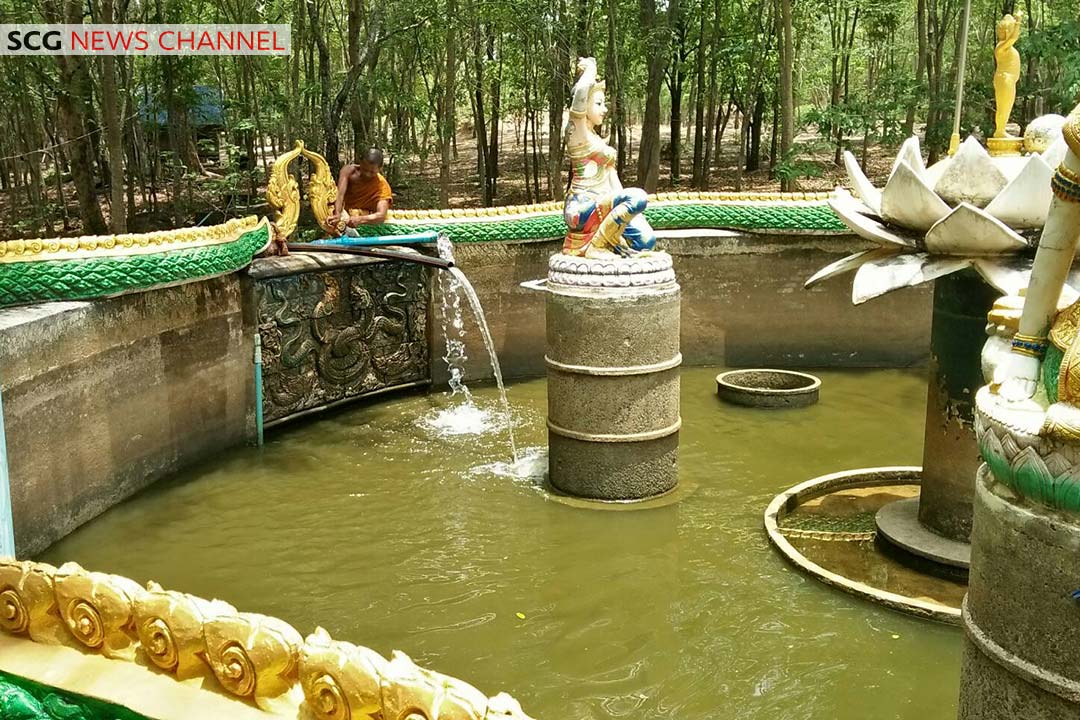Ban Non Toom Taworn at Moo 12, Bak Dong Subdistrict, Khun Han District, Sisaket Province, is a village with unique characteristics where its locals have passed on the Khmer culture and traditions through the generations. Located in the lower northeastern region of Thailand or known as the southern Esan region, the area is adjacent to Preah Vihear Temple while most of the village is on Phanom Dong Rak Mountains, one of the water sources of several rivers that contribute to the livelihood of the people in Sisaket province.
Most importantly, the village is one of the red zones where red soil with a high amount of nutrients can be found, as the area contains lava soil which is ideal for agriculture. Thus, the village is known for delicious fruits such as durian, rambutan, longan, mangosteen, langsat, maprang, and mango. The lava durian found in Sisaket is different from durian grown elsewhere as the fruit would have a mild scent, as well as a delicate and soft texture without excessive moisture of the typical durian, earning it a spot among products with Geographical Indication or GI.
Sub Lieutenant Hemarat Sudachat, a former military officer who worked for various ministries for nearly 20 years has a passion to develop his own hometown and decided after receiving his Master’s degree in 2018 that he would follow his dreams and return to the village to utilize his knowledge to develop the area through agriculture and allocated the 6 rai of land that his father had given him to grow durian.
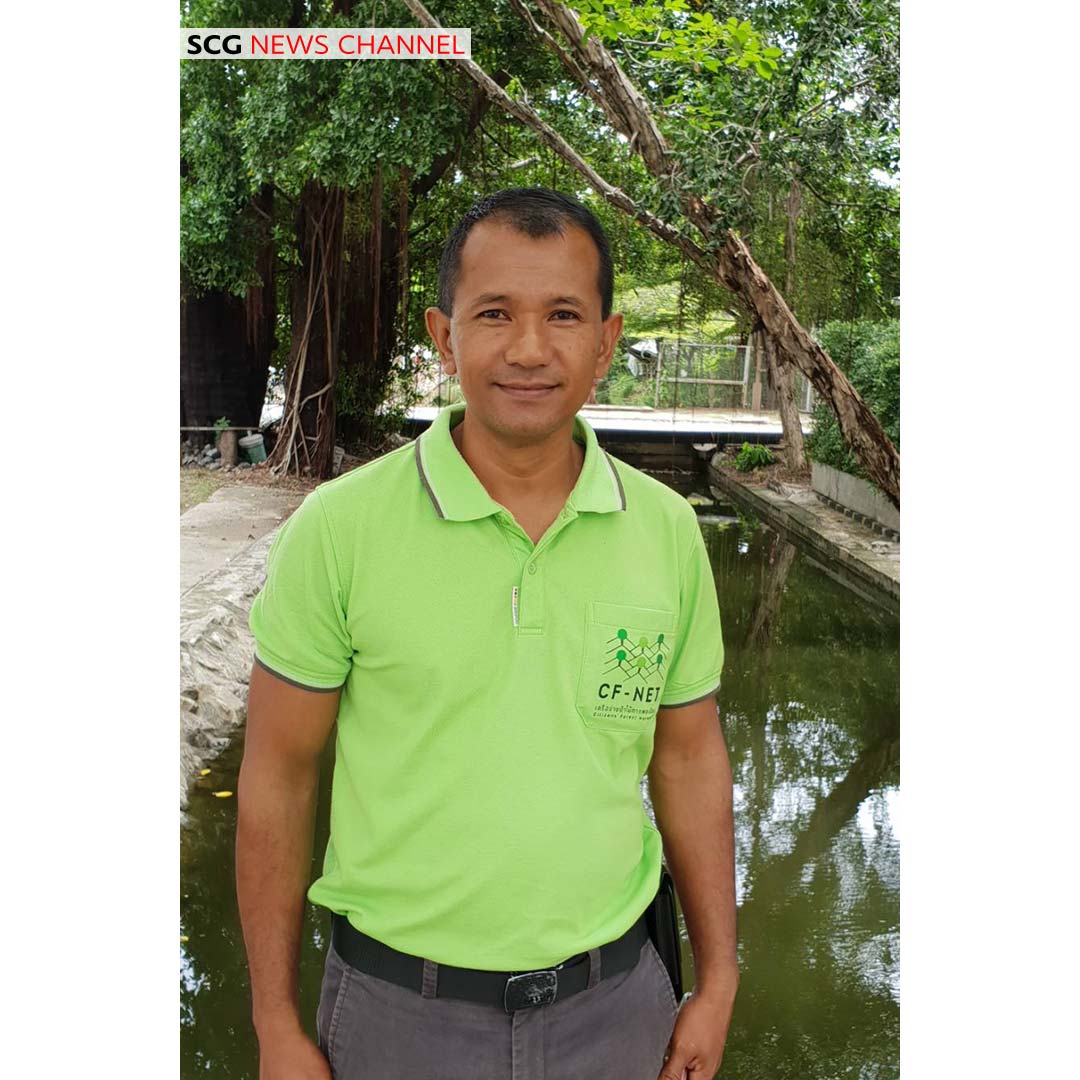
From Repeated Drought to New Hopes for the Community
Sub.Lt. Hemarat was born and brought up in Non Toom Taworn community and his dissertation focused on community development. Thus, he understood that the root of poverty of the people in the village which leads to social issues is the result of the lack of local resources management as there is no water reserve for consumption and agriculture. Thus, from the months of January to April of every year, the village would face drought while the rainy seasons would bring floods.
To combat this problem, agriculturalists in the village would each find their own way of survival. While those with financial means would use water trucks to transport water from faraway locations, those with lesser resources would grow crops that utilize less water instead. In 2020, the village faced the most severe drought in 40 years as well as the effect from the COVID-19 virus which combined to make the situation even worse. Apart from the decrease in income, many farmers had to let their crops become damaged as a result.
However, the former military officer believed that “drought is manageable” if the village decides to draw water from the Huay Ta Reservoir – located approximately 1,700 meters from the village – to store in the village’s existing well. Therefore, he encouraged people in the community to work together in order to combat drought. Though there is hope that the situation would be resolved, many people did not believe that the operation to draw water was possible as the reservoir is located far from the village, and most importantly, the village is situated 52 meters higher than the reservoir or equal to 17 floors. Therefore, in order to succeed, the villagers must lay down pipes and water pumps across a steep cliff in order to transfer the water to the village.
“When I asked the villagers to join me in this operation, no one believed that we can draw water from the Huay Ta Reservoir. However, it was the only hope for farmers in the village, as not everybody could afford to pay for water trucks which costs 500-600 baht per month excluding gas.”
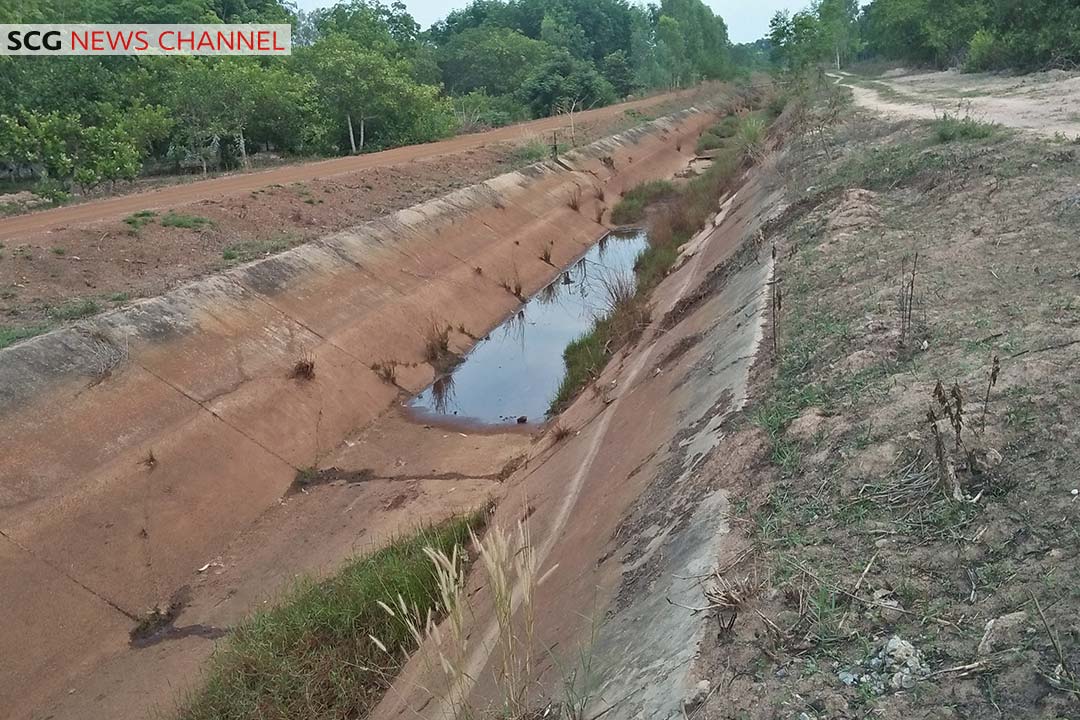
Solutions to Drought
As Sub.Lt. Hemarat is part of a new generation of farmers who are keen to learn new skills, he found a solution to the drought that has become more severe through a search engine. He also discovered photographs relating to the “SCG Helps 108 Communities to Overcome the Drought Crisis” project on social media. Thus, he decided to contact the Hydro – Informatics Institute or HII to seek more knowledge and apply to join the project as he wanted to solve issues relating to water in the village.
After he had contacted the institute and talked about the problems in the community, Sub.Lt. Hemarat wrote a plan on drawing water from Huay Ta Reservoir to the public well in the village. He then presented his plan on the telephone and in person in Bangkok as well as attended several telephone conferences during the announcement of the Emergency Decree (the COVID-19 lockdown). After 2-3 months, his plan was approved by the HII committee who sent an installation manual as well as floating solar mounting systems, solar cell panels, and water pumps that will enable the villagers to draw water from the Huay Ta Reservoir to the well.
“The plan was approved during the lockdown in April, which was the period when we were prohibited from traveling outside our province, and if we were to travel, we would face a 14-day quarantine period. Thus, the HII team was not able to travel here, so they sent an installation manual to the villagers. The hardest part was installing the pipes across a steep cliff where we had to climb up and down several times. Though we face numerous challenges, with the skills and the cooperation from the community who helped to solve problems onsite, we successfully installed the system within three day. After that, we faced more issues such as broken pipes, and we had to repeatedly resolve the issues until we were able to access the water.”
According to the engineering plans from the HII team, there were five key points that the villagers needed to install equipment for the project. Point 1 Install the solar cell water pumps and floating mounts to draw water from Huay Ta Reservoir to the water pond in the temple in the community, Point 2 Install the water pump from the village pond and lay down water pipes to transfer the water to the public well in the village, Point 3 Lay down water pipes from the water pressure system at Huay Ta Reservoir to the solar cell water pump, Point 4 Lay down water pipes from the Huay Ta Reservoir, Point 5 Lay down water pipes from the temple to the public well.
This project enabled 380 villagers in 93 households across an area of 4,000 rai in the community to benefit from the water management initiative that gave them water for consumption.
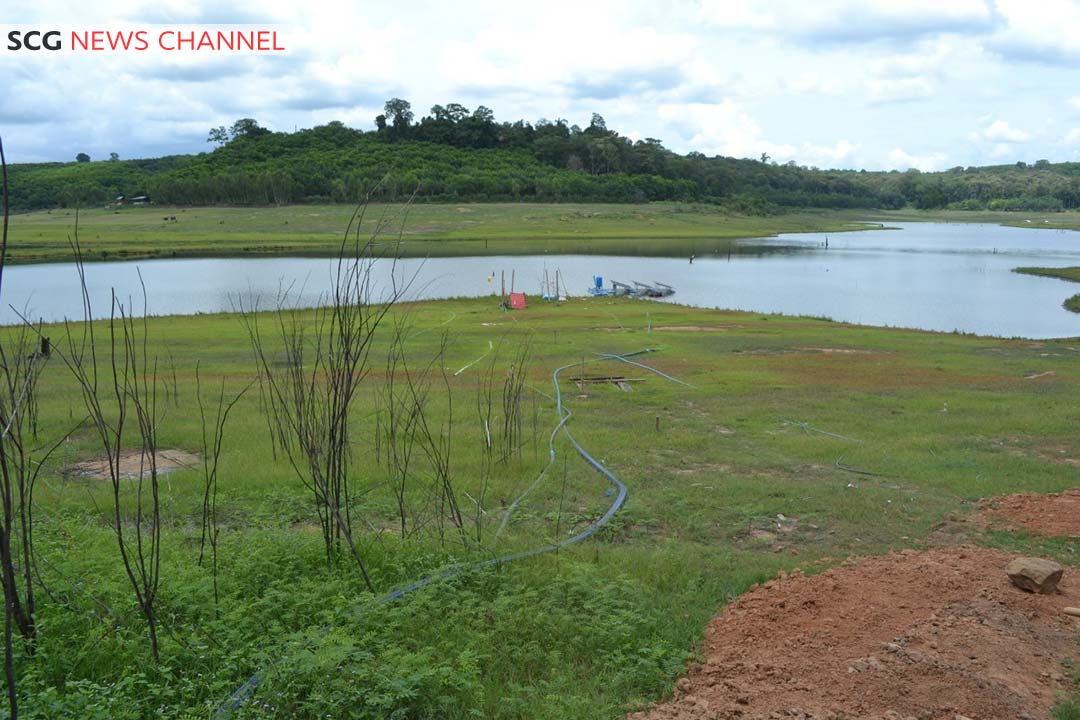
From Short-Term Solutions to Sustainable Water Management
The success of the public well in the village was just the beginning of the joint water usage agreement that will lead to sustainable development in the village. Once the village water management committee was formed, the village must seek water sources in the community, from pond to canals, and help revive water sources that had been damaged by construction and neglected to become functional as a water reserve for the community through the “SCG Helps 108 Communities to Overcome the Drought Crisis” project. This project lasts three years and will help guide the community on water management to enable them to have water for consumption and to have sufficient water to sustainably carry out agricultural activities.
“HII said that drawing water from Huay Ta Reservoir is only an emergency solution for the drought. The real challenge is for us to find a sustainable solution without drawing water from other areas. Thus, the community needs its own water sources. I admit that since I was born, the last time I saw a water source in the village was in 1997 and we never had any water sources again as these areas were filled with dirt, weeds, construction, incorrectly built dams, or flood ways that were too high, resulting in water shortages for those in the community,” Sub.Lt. Hemarat said.
For the sustainable water management plan, apart from managing water resources in the community, the villagers must ensure that they have enough water for three types of uses: consumption, agriculture, and keeping the ecological balance.
“Water should be a resource that is free for use. Thus, after we develop water sources for consumption and for agriculture, we plan to install water purifiers for use in the village.”
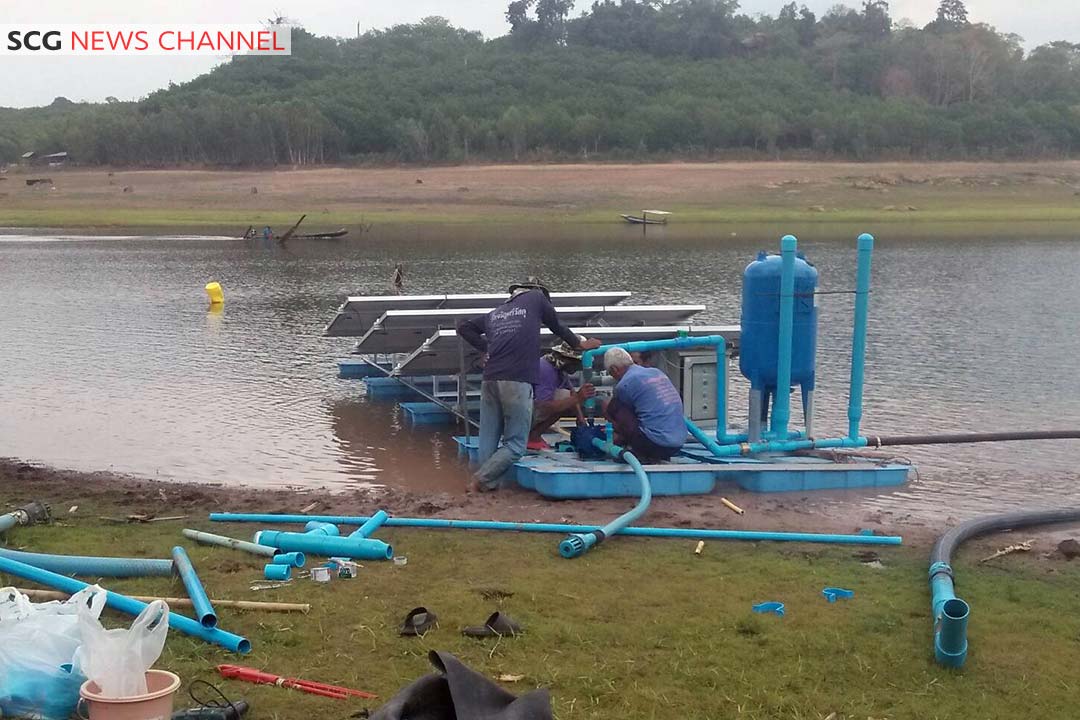
Water: The Bloodline to Sustainable Living
Water is like a bloodline that feeds all parts of the body and is an energy source for life. Therefore, with access to water, the villagers can grow more crops, especially those that utilize a large amount of water and can be sold at a higher price such as durian and rambutan. The lava durian grown here is a quality crop that can lead to development in tourism and attract more visitors to the area who will buy the produce. Moreover, the villagers are encouraged to become more independent, to lower their spending and increase their income through various development projects such as converting bioenergy to cooking gas that will help them save costs on cooking gas which are 400 baht per tank and can be used for only one month.
“With access to water, we have more forest area and we can grow more crops to generate a higher income in addition to the villager’s main occupation. In the past, we would avoid growing crops that required a large amount of water. Therefore, water is like a bloodline that can give life to every part of the body. Once we have water, the villagers are more interested in growing crops and finding new ways to generate income.”

Initiate – Cooperate – Learn – Share: The Secret of the Success in Combating Drought
Sub.Lt. Hemarat said that the success of the community’s cooperation in fighting the drought was the result of the community’s understanding of their identity, background, and existing resources, which allowed them to understand the problems and needs of the community without waiting for outside assistance. Most importantly, the villagers themselves chose to work together, to be independent, and to learn about new technology that can be used to solve the drought problem.
“Once we have an understanding of the problem, we know our needs and we were able to correctly identify and solve our problems successfully, as we have a solution that truly addresses the issue. This knowledge will stay with the villagers and be passed on to the next generation as well as taught to other communities that face the same problems. This is much more sustainable compared to asking others for help. If the community does not work together and manage their own resources, this sustainable knowledge will not be created in the community.”
The success of this project is the result of the Sufficiency Economy Philosophy that Sub.Lt. Hemarat has studied for a long time. He has been determined to pass on this knowledge while also following the New Theory Farming System by planting over 100 durian crops. He also manages his land under the principle of “sufficiency, rationality, and immunity”.
This project is the result of three months’ work of learning and seeking solutions to the drought. In the end, the community water sources that have been neglected for over a decade were revived to bring back the livelihood of the villagers in a sustainable manner. Combined with a beautiful cultural heritage, “Ban Non Toom Taworn” is now a beautiful gem that has been developed into a community with value that can serve as an example of sustainable development. Moreover, the community is ready to become a quality tourism destination thanks to this project.
